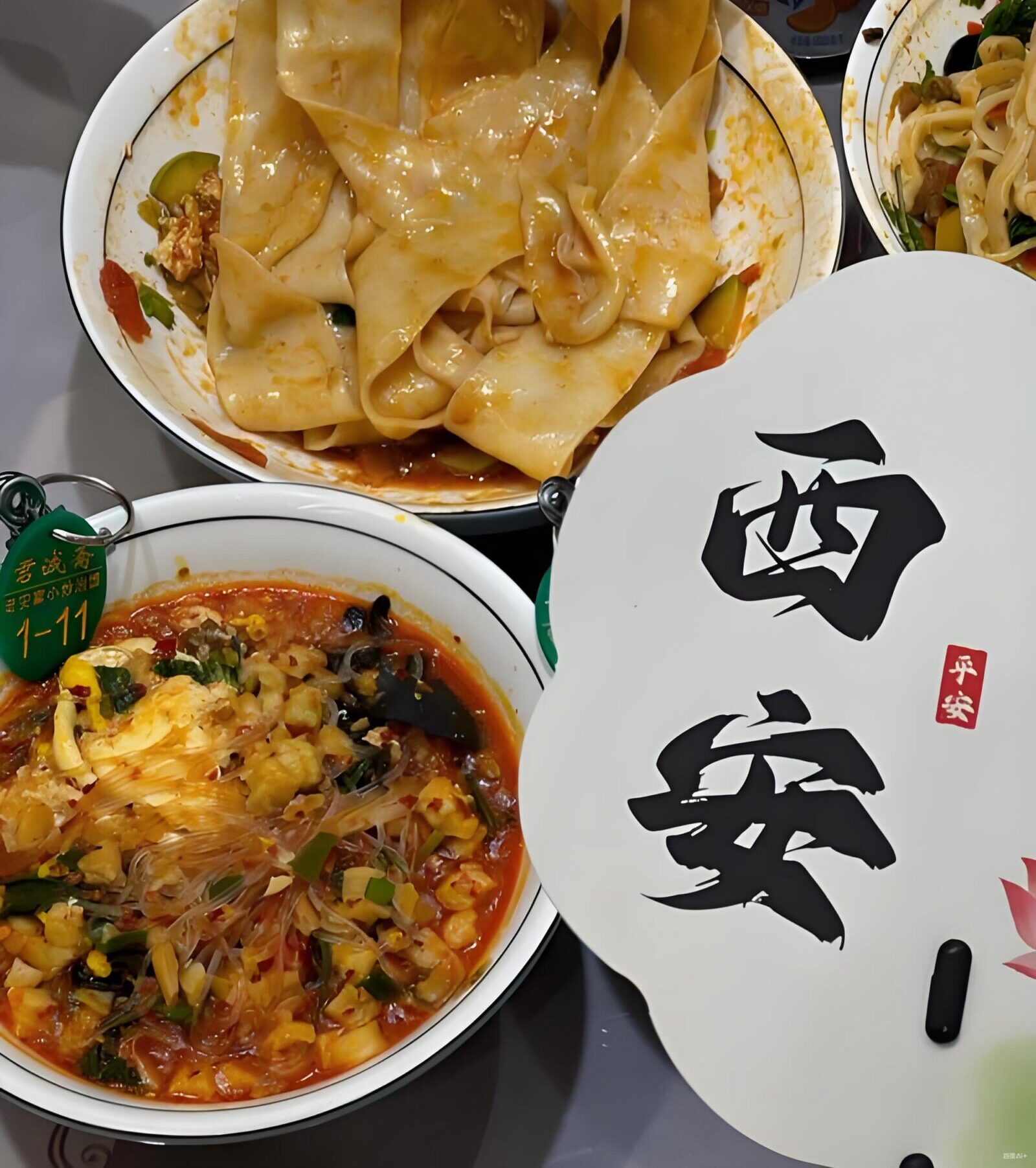Curious about Shanghai food in 2025? You're in for a treat. From juicy soup dumplings to richly braised pork belly, Shanghai cuisine blends sweet, savory, and umami in every bite. This year, local favorites and hidden gems continue to redefine what makes this city's flavors unforgettable. Whether you're a foodie or just hungry for something new, these must-try dishes offer a delicious deep dive into authentic Shanghai taste.
What Are the Must-Try Shanghai Food Dishes in 2025?
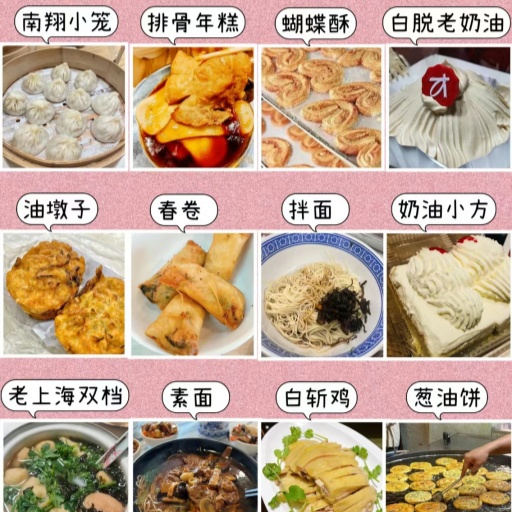
Can’t-Miss Foods in Shanghai
Shanghai food in 2025 offers a rich variety of flavors and textures. These iconic dishes perfectly capture the essence of local cuisine. Whether you are a first-timer or a regular, these dishes deserve your attention.
1. Xiao Long Bao: Shanghai’s Iconic Soup Dumplings
Delicate and tender, Xiao Long Bao offer a unique eating experience. Their thin skins wrap a flavorful, savory broth and juicy pork inside. Nanxiang Mantou Dian, established in 1900, is famous for its perfect dough and soup balance. Jia Jia Tang Bao also stands out for its juicy fillings. Together, these spots represent the heart of Shanghai food culture with unforgettable flavors.
2. Sheng Jian Bao: Crispy Pan-Fried Buns with Juicy Filling
A beloved breakfast and snack, Sheng Jian Bao delivers a satisfying contrast of crispy bottoms and soft, juicy interiors. Yang’s Dumplings is the crowd favorite for its consistently crunchy texture and rich taste. For a more traditional style, try Da Hu Chun’s charcoal-pan-fried buns, known for their smoky aroma and perfect crunch.
3. Hong Shao Rou: Sweet and Savory Braised Pork Belly
Shanghai’s comfort food, Hong Shao Rou, melts in your mouth thanks to slow braising in soy sauce and Shaoxing wine. Old Jesse (Lao Ji Shi) is a must-visit for its rich, balanced flavors. Wang Bao He, with its century-long history, also serves tender, non-greasy versions capturing the sweet-savory hallmark of Shanghai food.
4. Pai Gu Nian Gao: Tender Ribs Meet Chewy Rice Cake
This dish combines the smoky richness of pork ribs with soft, chewy rice cake that soaks up every drop of savory sauce. Xiao Shaoxing’s rendition wins praise for its hearty ribs and balanced sweetness. Pai Gu Nian Gao perfectly showcases Shanghai food’s focus on harmonious textures and bold flavors.
5. Cong You Bing: Crispy Scallion Pancakes Loved by Locals
Cong You Bing stands out with its flaky, golden crust and fragrant scallions. Lai Lai Xiao Long is one of the top places known for pancakes that strike the perfect balance between crispiness and aroma. This simple yet satisfying snack represents the best of Shanghai’s street food culture.
6. Xie Huang Mian: Luxurious Crab Roe Noodles for Autumn
In autumn, crab roe noodles are a must-try seasonal specialty. Thin noodles get coated in rich, creamy crab roe, delivering silky texture and intense seafood flavor. Old Jesse and Zhen Zhen Crab Roe Noodles are top picks to savor this delicacy. The dish perfectly captures Shanghai food’s seafood influence.
7. Ma Jiang Mian: Creamy Sesame Paste Noodles for Any Time
Chewy noodles mixed with smooth, nutty sesame paste create a comforting dish called Ma Jiang Mian. Lao Hong Mian Guan is famed for its rich, balanced sauce, while Wenheyou impresses with fragrant sesame flavor and smooth noodles. This simple dish highlights the humble yet deep flavors typical of Shanghai food.
8. Yangchun Noodles: Refreshing Springtime Wheat Noodles
Yangchun noodles offer a clean, light broth with fresh scallions, perfect for springtime refreshment. Its simplicity highlights the fresh and delicate flavors Shanghai food can offer. This dish is beloved for its easy-to-enjoy texture and subtle taste.
Where Can You Discover the Best of Shanghai Cuisine?

Shanghai Old Jesse Restaurant(Lao Ji Shi)
Classic Local Restaurants That Locals Swear By
Shanghai’s culinary roots run deep, and several classic restaurants have stood the test of time. Lao Ji Shi has operated for decades, famed for its delicate Steamed Crab Meat Soup Dumplings. This spot consistently scores top marks on both Dianping and TripAdvisor for authentic taste. The restaurant uses traditional recipes, preserving the original flavor of Shanghai food.
Another historic gem is Xiao Shaoxing , which focuses on traditional Shanghainese dishes. Here, you can find authentic Drunken Chicken, rich Braised Pork Belly, and seasonal specialties. The place is loved by locals who value home-style cooking. Reviews highlight the restaurant’s cozy atmosphere and quality ingredients.
Wang Bao He has earned its reputation over many decades. This restaurant specializes in slow-braised dishes like Hong Shao Rou and other classic Shanghai staples. Locals praise its consistency and attention to detail, which make it a must-visit for those craving real Shanghai food.
These places aren’t just about food—they represent Shanghai’s culinary heritage. Eating at these long-established restaurants gives you a glimpse into the past and present of Shanghai food culture. The mix of nostalgic flavors and warm service will make your dining experience memorable.
Visiting these old-school eateries is a great way to discover how Shanghai food has evolved while keeping tradition alive. If you want a true taste of the city, don’t skip these classics. They offer a perfect introduction to the best of Shanghai food in 2025.
Hidden Gems in Old Neighborhoods
When exploring authentic Shanghai food, the city’s old neighborhoods hide some real treasures. These spots are less touristy but offer the truest local flavors.
One must-visit place is Lailai Xiaolong . This tiny shop specializes in Shanghai’s iconic xiaolongbao, or soup dumplings. Dianping rates it above 4.5 stars, and reviewers love the juicy, thin-skinned dumplings filled with savory broth and pork. The place is small and simple, just like the best shanghai food joints. Expect a short wait but trust us, it’s worth it.
Not far from there, you can find Aiyu Snack Stall in a quiet lane of the old city. This stall has been serving locals for decades and is famous for its sticky rice balls . Reviewers praise the perfect balance of sweetness and chewiness. The stall is modest but packed with locals during mealtimes, proving its popularity.
Another hidden gem is Chao’s Noodle House. It’s famous for hand-pulled noodles and beef noodle soup. This shop scores consistently high on Dianping with over 4.6 stars and is recommended by TripAdvisor for authentic flavors. The noodles are fresh, chewy, and served with rich, slow-cooked broth — a perfect example of shanghai food comfort.
These hidden spots show the soul of shanghai food — simple, honest, and deeply connected to local life. Unlike polished restaurants, these eateries focus on tradition and taste.
Food Streets You Shouldn’t Miss
If you're hungry for local bites, Shanghai has streets made for eating. These places are perfect for tasting classic and creative Shanghai food. You can walk, snack, and soak up the city vibe all at once.
Wujiang Road Food Street is a long-time favorite for locals and travelers. It’s near Nanjing West Road and always buzzing. The street is full of stalls and tiny shops. You’ll find fried buns , beef skewers, and bubble tea here. One top pick is Yang’s Fried Dumplings . Their crispy-bottom pork buns are juicy and hot. This spot is a must for anyone new to shanghai food.
Next is Huanghe Road, another old-school food street. This one is less commercial and more local. You can eat at famous spots like Xiao Shaoxing , known for its tender white-cut chicken . It’s been open for decades and still gets lines out the door. Try also the wonton noodles and soybean milk — classic flavors, simple and satisfying.
Changli Road Night Market in Pudong is where things get fun at night. It comes alive with smoky grills, sizzling woks, and street vendors shouting for business. Grab a spicy lamb skewer or grilled squid. Locals love the stinky tofu stand here too. It may smell strong, but the taste is bold and addictive — a real shanghai food memory.
Don't skip Nanjing Road Pedestrian Street. While it’s more famous for shopping, it hides tasty food spots too. Look for the basement food courts or snack shops inside malls. Try pan-fried buns, scallion pancakes, and sticky rice rolls. It’s touristy, but if you know where to look, you’ll find gems mixed with the crowds.
Sipailou Road near Yuyuan Garden is packed with traditional snacks. Think fried gluten balls, sesame cakes, and crab shell pastries . It’s tourist-friendly but still full of local flavor. Many of these snacks have been made the same way for generations.Whether you like sweet, salty, or spicy, these streets have it all. They offer a real taste of shanghai food culture. Walk, eat, repeat — that’s the rule here.
When and What Do Locals Eat Throughout the Day?
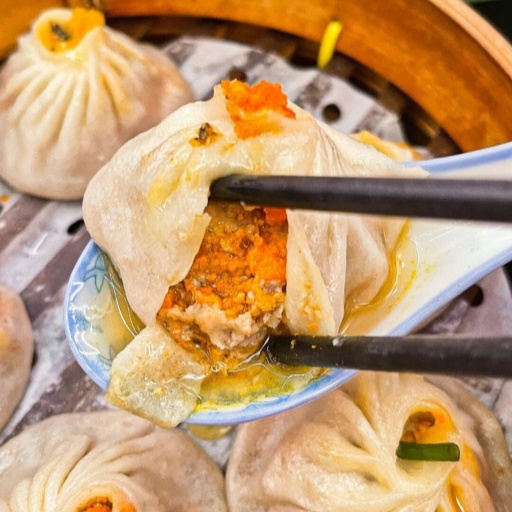
Shanghai Classic: Crab Roe Soup Dumplings
Morning: Dumplings and the Bund
Start your day early in the Old City. Head straight to Lai Lai Dumpling Shop near Yuyuan Garden. Locals love this tiny spot for its juicy xiao long bao. Each bite bursts with soup and pork flavor. It's cheap, fresh, and unforgettable.
After breakfast, stroll over to Yuyuan Garden. Wander through its classical pavilions, stone bridges, and koi ponds. Stop by the Yuyuan Bazaar for a quick snack—try crab shell pastries from local bakeries. They're crispy, flaky, and filled with sweet or savory fillings.
Next, walk or take a short cab ride to The Bund. This waterfront stretch is home to colonial-era buildings and skyline views. Grab a coffee at a riverside café and enjoy the view of Pudong. It’s the perfect mix of history and modern beauty.
Afternoon: Street Eats and French Flair
Lunchtime is ideal for sampling Shanghai’s beloved street eats. Head to Wujiang Road Food Street, just steps from Nanjing West Road. This area is famous for fast, delicious, and budget-friendly meals. Try pan-fried pork buns, beef noodles, or scallion pancakes.
After lunch, hop on the metro to Tianzifang in the French Concession. This charming area blends narrow alleys, art shops, and historic shikumen buildings. Snack as you walk—many stalls offer fusion bites like cheese wontons or black truffle soup dumplings. It’s where East meets West on a plate.Need a break? Grab a cold brew or local jasmine tea at a café. Sit back and enjoy the laid-back vibe that defines this part of Shanghai.
Evening: Skyline Views and Flavors of Home
As evening approaches, head to Lujiazui in Pudong. This is where the modern Shanghai skyline shines brightest. Take a ride up Shanghai Tower or enjoy views from Jin Mao Tower’s sky bar. It’s dinner time with a view.
For food, skip the tourist traps. Walk over to Wang Bao He, a time-honored restaurant known for Shanghai hairy crab and drunken shrimp. With over 260 years of history, it’s the real taste of old Shanghai. Locals still dine here for authentic Shanghai flavors.Prefer a low-key dinner? Try Xiao Shaoxing near People’s Square. Their white-cut chicken is iconic—tender, cold, and dipped in soy-ginger sauce. Pair it with hot soup and stir-fried greens for a true local meal.
End your night with a walk along the Bund again, this time under glowing lights. Grab a cup of warm sweet fermented rice wine from a street vendor. It’s the perfect nightcap and a toast to a full day of Shanghai food and sights.
How Do You Eat Like a True Local?
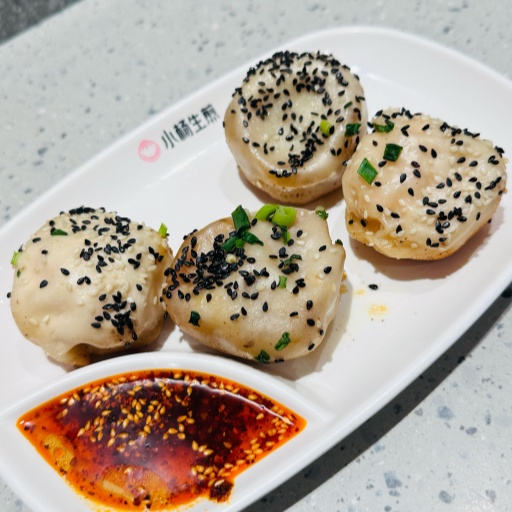
Delicious Shengjian Bao from Yang’s Dumplings
Eating like a local in Shanghai isn’t just about what’s on your plate — it’s about the timing, the attitude, and the little habits that locals take for granted. If you want to truly experience the city’s food culture, you need to eat how they eat, not just what. Here’s how to get it right.
Understand Local Dining Habits and Meal Times
Shanghai locals tend to follow a pretty structured eating schedule. Breakfast happens early — usually between 6:30 and 8:00 AM — and it’s eaten on the go. You’ll see locals lining up at street stalls for hot soy milk, sticky rice rolls, scallion pancakes, and warm steamed buns. It’s fast, cheap, and comforting.
Lunch is typically around noon, and many office workers stick to simple, quick dishes like dumplings, noodles, or set meals that include a protein, veg, and rice. Dinner, on the other hand, is a slower, more social affair. Families often eat together around 6 to 7 PM, sharing multiple dishes. If you're invited to someone’s home, take it as a sign of real warmth — and prepare to eat a lot.And don't forget the snack culture. From mid-afternoon bubble tea runs to late-night wonton hunts, locals eat between meals, too — and these in-between bites are often where the real flavor lives.
Master the Art of Ordering and Table Manners
Locals rarely eat alone — meals are meant to be shared. Whether at a home gathering or small restaurant, expect to order multiple dishes and share them with the table. Typically, the host or eldest person will do the ordering. You can show respect by letting them choose, or by asking for their recommendations first.When it comes to choosing dishes, variety is key: one cold starter, a couple of hot mains (meat and veg), and a soup to finish. Hot and cold, soft and crispy, spicy and sweet — balance is everything.
Also, watch your table manners. Don’t stick your chopsticks upright in your rice (it’s considered disrespectful), don’t spin the lazy Susan too abruptly, and never pick through dishes with your chopsticks — it's seen as rude. Locals are forgiving if you’re trying, though — even fumbling politely with chopsticks earns you a smile.
Go Beyond Restaurants: Try Local Canteens and Food Stalls
If you really want to eat like a Shanghai local, step away from the trendy restaurants and Michelin-starred spots. Find a neighborhood food court in a residential area. Step into a workday canteen open to the public. Join the line at a breakfast stall under a flyover. This is where locals eat every day — and where flavors stay true to their roots.
In places like Shikumen alleyways or campus-style cafeterias, you’ll find homestyle dishes at unbeatable prices: stewed tofu, shredded pork noodles, egg and tomato stir-fry, or even a bowl of tangyuan (sweet rice balls) for dessert. You won’t find much English on the menus, but you will find locals who are more than happy to help you out, especially if you try to speak even a little Mandarin.It’s messy, it’s fast, and it’s full of flavor. Most importantly, it’s authentic.
What Makes Shanghai Food So Unique?
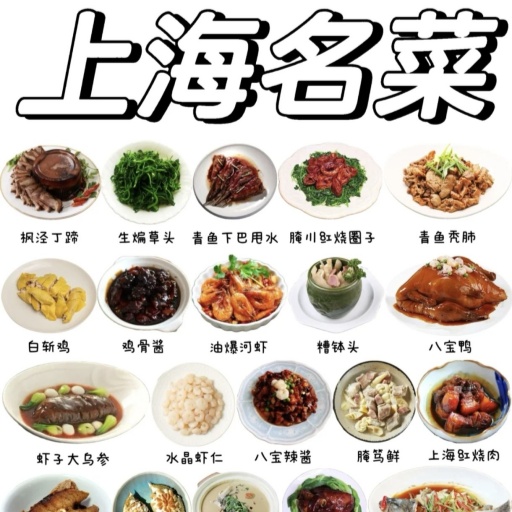
Shanghai Local Cuisine
Local Flavors and Influences
Shanghai food is famous for its light, sweet flavors. Locals love dishes that balance soy, sugar, and wine. Chefs aim to highlight the ingredient’s natural taste. They don’t mask flavors—they bring them out.Many regional dishes use fresh river seafood. Think of steamed perch, hairy crab, and shrimps with green tea leaves. These dishes showcase Shanghai’s closeness to rivers and lakes.
Another key ingredient? Aged soy sauce. It adds depth and color without overpowering the food. You’ll find it in braised pork, stir-fries, and soups. Shaoxing wine also plays a big role. It gives meat a mild sweetness and removes any strong odors.
A classic dish that defines local cuisine is hong shao rou—red-braised pork belly. It’s tender, glossy, and melts in your mouth. The sauce is a slow blend of soy, sugar, wine, and spices. It’s pure comfort in a bowl.Shanghai food also embraces slow cooking. Braising and steaming are popular here. Locals enjoy lingering meals, not fast bites. Food is meant to be shared and savored.The flavor profile is gentle, yet complex. Even a simple vegetable stir-fry will surprise you with its balance. That’s the heart of Shanghai cooking—subtle, yet layered.
East Meets West: A Culinary Melting Pot
Shanghai was once known as the “Paris of the East.” In the early 1900s, foreign influences poured in. The result? A food culture that embraced global flavors. But it did so the Shanghai way—gently and elegantly.In the former French Concession, you’ll find cafés next to noodle shops. Locals sip espresso before heading to lunch for steamed dumplings. This fusion is not new—it’s part of Shanghai’s soul.Take Russian borscht, which Shanghai locals turned into luo song tang. It’s lighter, sweeter, and full of cabbage and tomato. Or Shanghai-style curry, softer than its Indian cousin, with potatoes and beef stew.
Western pastry also found a home here. Try a slice of Shanghai-style cheesecake—less sweet, soft, and often paired with matcha or black sesame. You’ll even find ham-and-cheese mooncakes during Mid-Autumn Festival.Many young chefs now blend tradition and trend. You’ll see xiao long bao with cheese, or truffle oil in fried rice. Some love it, some don’t. But it’s undeniably Shanghai—open-minded and bold.Shanghai food isn’t stuck in time. It grows, absorbs, and evolves. That’s why the city’s culinary scene stays fresh while keeping its roots deep.
Seasonal Eating in Shanghai
Shanghai people love eating with the seasons. They believe food should match the weather and time of year. It’s not just tradition—it’s flavor logic.
Spring brings fresh bamboo shoots and broad beans. Locals cook xian dou du xian, a soup made with pork, bamboo shoots, and green soybeans. It tastes clean, bright, and soothing.Summer means cool dishes. Locals escape the heat with liang mian—cold noodles with sesame sauce, cucumber, and shredded chicken. Pair it with iced plum juice, and you’re set.Autumn is crab season. Ask anyone—they’ll say it’s the best time to eat. Hairy crab from Yangcheng Lake is rich, creamy, and a delicacy. People steam it whole, dip the meat in vinegar and ginger, and drink yellow wine with it.Winter warms the soul with rich, hearty dishes. Locals crave yang rou tang, a mutton soup with tofu, vermicelli, and ginger. It’s comforting, spicy, and great for cold days.
Even snacks change with the weather. In spring, you’ll find qingtuan—green sticky rice balls filled with bean paste. In autumn, look for chestnut cakes and sweet osmanthus jelly.This attention to seasons keeps Shanghai food fresh and exciting. It’s why locals line up for special dishes that only appear once a year.
Reference
Frequently Asked Questions (FAQs)
Q: Do I need to tip at restaurants or street food stalls in Shanghai?
A:No tipping is needed in Shanghai. Tipping isn’t part of the local culture. Whether at a restaurant or street stall, the price you see is what you pay. Staff don’t expect extra, and they may politely refuse tips. Even in upscale places, service charges are usually included in the bill. Street vendors expect quick payment by cash or mobile pay, not tips. So don’t worry about tipping—you’re not rude by skipping it. If you want to show thanks, just say “xie xie,” smile, or return as a regular customer. Good manners and enjoying the food mean more here than tipping.
Q: Can I find vegetarian options on the Shanghai evening street food tour?
A:Yes, plenty of vegetarian options exist on Shanghai’s street food scene. Popular choices include scallion pancakes, tofu skewers, stir-fried greens, and sweet potato balls. Many stalls offer vegetable dumplings, sesame buns, and sticky rice rolls with pickled radish. Learning simple phrases like “bu yao rou” (no meat) or using a translation app helps. Desserts like glutinous rice cakes and red bean pastries are usually meat-free too. So even vegetarians can enjoy a variety of tasty local snacks.
Q: Is the tour suitable for families with children?
A:Absolutely! Shanghai street food is great for families. The lively streets, colorful snacks, and food prep are fun for kids. Kid-friendly dishes include sweet pancakes, noodles, fried buns, and sticky rice balls—mild and bite-sized. Food streets are safe and well-lit in the evening. Bring wipes, water, and a stroller if needed. Kids enjoy watching noodles pulled, buns steamed, and skewers grilled. It’s tasty and interactive, making the street food experience a memorable family adventure.
Q: Are there non-spicy dishes in Shanghai cuisine?
A:Yes. Shanghai cuisine is known for sweet, savory flavors without heat. Unlike spicy Sichuan food, most Shanghai dishes are mild. Favorites like soup dumplings, pan-fried pork buns, soy sauce noodles, and braised pork belly aren’t spicy. Chili oil or pepper sauce is optional and served on the side. You can ask for “bu la” (not spicy) when ordering. Snacks and desserts like sticky rice balls and tofu pudding are also spice-free. So spice-sensitive visitors have plenty of delicious options.
Q: What are the most kid-friendly dishes in Shanghai?
A:Kids love Shanghai street food! Soup dumplings are warm and soft, pan-fried pork buns are crispy and fluffy, and scallion pancakes are chewy and tasty. Fried noodles and egg tarts are mild and familiar. Sweet treats like sticky rice with sugar, red bean pastries, and candied fruit skewers are colorful and soft. Watching noodles pulled and skewers grilled adds fun. Many stalls sell small portions so kids can try different things. Overall, Shanghai cuisine is very kid-friendly.
Q: Are English menus available at local eateries?
A:Sometimes in tourist areas, but often not at local street food stalls. Many vendors display food openly, so pointing works well. Some places have photo menus or price boards. Translation apps like Google Translate or Pleco help a lot. You can also save pictures of dishes to show vendors. Ordering street food may seem tricky at first, but with a little effort, you’ll quickly get the hang of it and enjoy local flavors.
Q: How do I avoid food scams or tourist traps?
A:Stick to busy stalls with long lines—that means locals trust the food. Avoid flashy signs, no-price menus, and pushy vendors. If someone aggressively sells you something, just walk away. Skip tourist hotspots’ famous stalls—they often overcharge and underdeliver. Walk a few blocks to find where locals eat. Always check prices before ordering and use apps like Dianping for trusted spots. Shanghai is generally safe and honest, but stay alert and trust your instincts.
Q: How long does a typical Shanghai food tour last?
A:A self-guided Shanghai food tour usually takes 2 to 3 hours. Start around 6 PM when stalls open. Choose one or two streets, like South Yunnan Road or Shouning Road, and stroll between vendors. You can try 6 to 10 dishes—mix savory and sweet, and keep portions small to sample more. Bring cash or a payment app, wear comfy shoes, and take your time. The goal is to savor the food and atmosphere, not rush. Self-guided tours are flexible and fun—you stop whenever you feel full.
Q:What is Shanghai food style?
Shanghai food style, also known as Benbang cuisine, is all about subtle sweetness, rich sauces, and seasonal ingredients. Locals love slow-cooked dishes, often braised in soy sauce and sugar, like the famous hong shao rou (red-braised pork belly). The flavors are mellow, balanced, and never too spicy — perfect for those who prefer comfort over heat.Seafood plays a big role too, thanks to the city’s coastal location. You'll often find fresh river shrimp, hairy crab, and eel on the menu. Another hallmark of Shanghai cuisine is its variety of dim sum and street snacks. From sheng jian bao (pan-fried soup buns) to congyou ban mian (scallion oil noodles), these small bites are packed with flavor.Presentation also matters — dishes are meant to look as good as they taste. Overall, Shanghai food is refined yet approachable, with a focus on harmony, texture, and a touch of sweetness.


